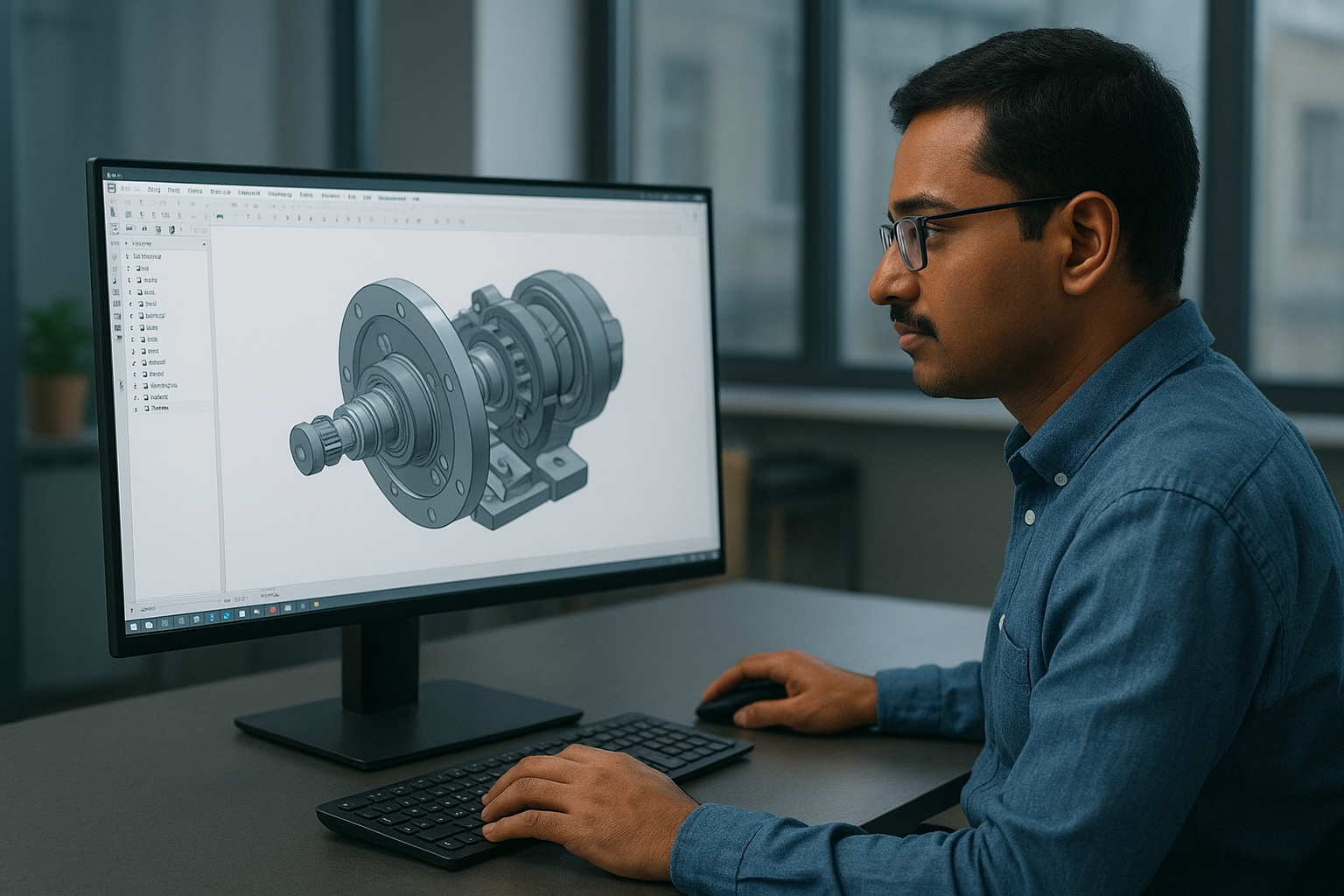


At Brick & Byte, we transform ideas into engineered realities through integrated design—because every wasted prototype and delayed handover costs millions unless your design process is truly connected.
Today, manufacturing is no longer just about producing parts—it’s about creating innovative, reliable, and high-quality products that compete globally. With Industry 4.0 technologies, AI-driven designs, digital twins, and rapidly evolving customer expectations, fragmented workflows are no longer an option.
This is where end-to-end engineering design services shine. Rather than separating concept development, CAD modeling, prototyping, and production, an integrated approach ensures a seamless workflow from idea to market-ready product.
At Brick & Byte Innovative Products Limited, we’ve seen how companies—from Ola Electric to Tesla, Airbus, and Tata Motors—benefit from integrated design services, resulting in reduced costs, shorter timelines, and products engineered to last.
What Are End-to-End Engineering Design Services?
End-to-end engineering design services cover the entire product lifecycle, ensuring each stage connects smoothly with the next. This reduces handover delays and costly rework.
Typical stages include:
|
Stage |
Key Activities |
Real-Life Example |
|
Concept Development |
Market research, feasibility studies |
Ola Electric designing EV battery layouts based on Indian market demand |
|
CAD Modeling |
3D models using SolidWorks, CATIA, Creo |
Airbus designing lightweight aircraft components |
|
Simulation & Analysis |
Stress, thermal, aerodynamics, durability tests |
Tesla simulating chassis for crash safety |
|
Prototyping |
CNC machining, 3D printing |
Havells India prototyping heat-dissipating motor parts |
|
Design for Manufacturing (DFM) |
Optimizing for production efficiency |
Britannia redesigning PET bottle necks to reduce waste |
|
Production Support |
Scaling to mass production |
Tata Motors ramping up EV assembly lines with OEM guidance |
By merging these stages, manufacturers achieve higher efficiency, fewer errors, and improved collaboration.
Why End-to-End Design Matters for Manufacturers
1. Reduces Errors and Miscommunication
With separate vendors handling CAD, prototyping, and production, gaps in communication often lead to mistakes. Integrated services provide a single source of truth, ensuring alignment at every step
2. Cost Savings
70% of product costs are locked in during the design phase. Early-stage simulations and DFM help prevent expensive reworks.
Example: Havells India cut redesign costs by 40% by identifying heat dissipation issues in motor assemblies before mass production.
3. Faster Time-to-Market
Industries like EVs thrive on speed. End-to-end workflows remove bottlenecks, enabling product launches months ahead of competitors.
Example: Ola Electric reduced its battery platform development cycle from 24 to 12 months using integrated design-to-production services.
4. Innovation at Scale
AI-driven generative design and rapid prototyping allow testing multiple variations quickly, accelerating innovation while minimizing risk.
Example: Tesla tested multiple chassis and battery configurations virtually before finalizing production, accelerating innovation cycles.
5. Improved Product Quality
Aligned CAD, simulation, and prototyping processes produce durable, precision-engineered products that meet global standards.
Example: Airbus used digital twin simulations to ensure aircraft wing structures meet extreme stress standards, reducing reliance on physical tests.
Real-Life Applications Across Industries
Automotive Industry: Driving the EV Revolution
The automotive sector is transitioning to electric mobility, lightweight design, and autonomous systems.
Example: Tesla and Ola Electric leverage integrated design to rapidly develop modular EV architectures, cutting costs and improving scalability.
Aerospace Industry: Precision & Compliance
Safety and compliance are critical in aerospace.
Example: Airbus uses digital twins to simulate aircraft structures under extreme stress, saving millions in physical testing costs.
FMCG & Consumer Products: Rapid Innovation
Even FMCG brands need fast design cycles for packaging, appliances, and electronics.
Example: Britannia redesigned PET bottle necks using end-to-end design, saving 30% in material costs annually.
Technologies Enabling End-to-End Design
Challenges & Solutions
At Brick & Byte, we blend secure digital workflows with on-ground engineering expertise, helping clients transition smoothly.
The Future: Industry 4.0 and Beyond
In the next decade, fully automated design-to-production cycles will dominate:
End-to-end design will no longer be optional—it will be essential for competitive manufacturing.
Conclusion: Designing India’s Future
End-to-end engineering design services are more than machines and CAD models—they are about shaping the future of manufacturing.
At Brick & Byte, every design is a step toward making India a global manufacturing leader. From EV platforms to aerospace precision parts, our solutions deliver speed, quality, and innovation at scale.
FAQs
1. What does end-to-end engineering design mean?
It’s an integrated approach covering concept development, CAD, simulation, prototyping, and production.
2. Why is it important for manufacturers?
It reduces costs, eliminates errors, accelerates timelines, and ensures product quality.
3. Which industries benefit most?
Automotive, aerospace, FMCG, electronics, and heavy engineering.
4. How does Brick & Byte support manufacturers?
We provide customized, end-to-end solutions, backed by CNC machining, prototyping, and production expertise in India.
5. Can end-to-end design help small and medium manufacturers?
Yes! Companies like Ola Electric and Havells India show that even mid-sized manufacturers can cut costs, speed up innovation, and scale efficiently with integrated design services.
???? Ready to accelerate your product journey?
Partner with Brick & Byte Innovative Products Limited today: brickandbyte.in